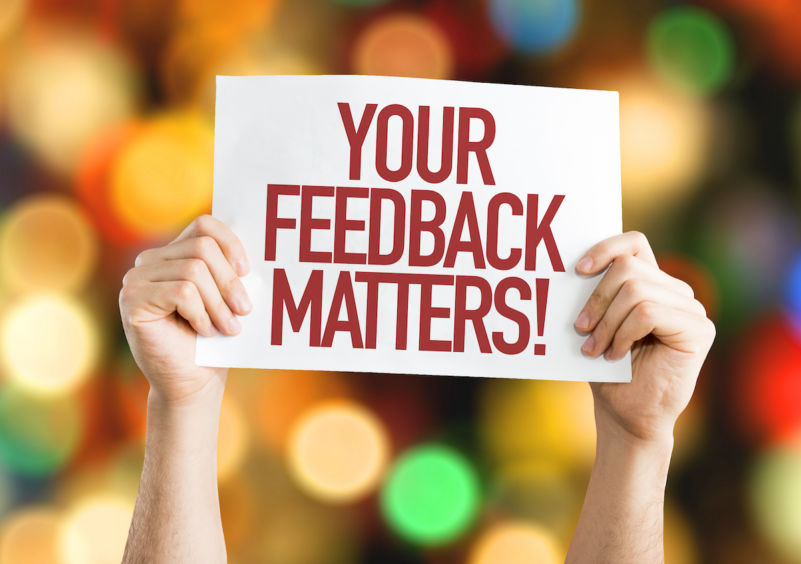Think back to your last Executive meeting. Was there any discussion of customer feedback? If so, was this dominated by one or two people whilst the rest stayed silent? It’s not unusual to find little, if any, shared customer intelligence within Executive Teams. Often, there’s no formal process for keeping tabs on feedback and unequal accountability for customer relationships.
This is dangerous. Without a collective finger on the pulse of your business, how can your Executive Team build an effective strategy? To my mind, customer feedback data is as important as financial data. It merits the same airtime in meetings and should feed all decisions in your company.
Rockefeller Habit #6
Customer feedback is the beating heart of the sixth of the Rockefeller Habits. What are they? If you haven’t come across them, look them up. They’re by far the best execution framework out there. Now in their twentieth year since their creation by Verne Harnish, I revisit them regularly. They form the core of my scaling-up coaching.
Typically, I introduce the Rockefeller framework around nine months after onboarding a client. We revisit them at the same time each subsequent year. They never cease to blow me away. Mastering the Rockefeller Habits will allow you to focus on the things that matter. I know this because I’ve used them to scale two businesses from zero to £30 million in only five years. They work.
The sixth habit is focused on regular and accurate customer data reporting. When we get to this point, I recommend that clients adopt NPS (Net Promoter Score). I’ve written about this simple but effective system for harvesting customer data. To my mind, it beats all other customer sat surveys hands down. It will give you the regular customer feedback data you need to feed into your weekly Executive meetings.
The 4Q conversation
There needs to be equal accountability in your Executive team for customer conversations. This means that every – and I mean EVERY – member should speak to a customer at least once a week. The info gleaned from these conversations should feed into your weekly Level 10 Executive meetings. Rockefeller Habit #6 suggests a ‘4Q conversation’ face-to-face or via phone/zoom. The four questions are as follows:
– Q1 How are things going at the customer’s end (business, not personal)?
– Q2 What’s going on in their industry?
– Q3 What do they hear about your competitors?
– Q4 How are you doing as their supplier?
What are you trying to do here? You want your customer to give you unbridled feedback on how you’re doing relative to your competitors and trends in their marketplace. You’re building a culture that actively seeks criticism so you can constantly improve.
When there’s an Executive meeting, everyone around the table is an equal partner in conversations about customers. If you had five people on the team, that’s 52 pieces of feedback per person per year – over 250 data points! Just think about how much insight you’ll gain into your customers and their unique problems. Knowledge is power here.
Using NPS to generate customer conversations
Another way to approach this might be to use your NPS feedback to generate the calls. We did this at Rackspace and Peer 1. One of the great things about NPS is you do a sub-set of your customers weekly. Very different to traditional customer sat exercises that survey customers annually and are pretty useless as a result. Within a typical week, you may have a few clients who’ve given you a score less than a 9 or 10. There may also be text comments.
We found it worked well if the person or group that owns the NPS survey arranged a call with an Executive to discuss the score or text comment. This gives you a way in to talk about any issues that have cropped up. You can then broaden out into a 4Q conversation. Customers never fail to see these calls as proper ‘wow’ moments – an Executive has taken the time to call them. And you’ll gain some valuable intel for your meetings.
Whenever we had these conversations, we found that 60% of our customers were dealing with at least one of our competitors. This was always good information to share and learn from. Similarly, these conversations would often uncover a sales opportunity. We ran a book tracking which director had generated the most additional income off the back of these conversations.
Building a personal network

Maybe you’re facing resistance from functional heads who haven’t traditionally spoken to customers. HR or Finance Directors, for example. Make it clear that they must pull their weight to be on the top team.
When I see it work best, time slots are allocated to these calls in everyone’s diaries. A PA or someone in the NPS team books the call in for you. Maybe Tuesday at 10am is your regular customer slot. With the diary booking, there’s a bit of data about the customer, how long you’ve worked with them and contact info to give some background.
There’s real value to be had from an HR or Finance Director ringing a client. Maybe they talk to the CEO to offer support to the opposite number on the customer’s team. If you’re the HR Director, you might be talking to them about their ability to attract and retain talent. In that conversation, you might learn about their off-shore operation in Bulgaria. That’s news to you! You wouldn’t have discovered this if you didn’t talk to them.
The 80:20 rule
Not all customers are created equal. So spend time segmenting them. Roughly 80% of your profit likely comes from only 20% of your customers. It’s these profitable customers that you need to be calling most often. When I was MD at Peer 1 in Southampton, we had 13,400 customers globally. After analysis, we realised that 60% of our revenue came from the top 5% or about 500 customers.
We knew we needed to double this small group of customers, as this would double our business in only three years. So we were laser-focused on ensuring they had the highest level of care and attention. The pulse we were taking was the right one. Be careful of this. Businesses have a habit of treating all customers the same. You need to be strategic.
Build a deep network across these high-value customers. It will make it much harder for them to quit. And you’re likely to uncover further business to expand the account.
Setting the right strategy
Strategy is hard. It requires a firm handle on the identity of your core customers and complete clarity on the unique problem you’re solving for them. How can your Executive team know this without talking to customers often? If you’re sitting in a strategic meeting as the HR Director, this is your opportunity to validate what you think your strategy is and whether it’s landing with customers. Instead of being a passenger, your input should be based on what you’ve heard.
Steve Blank, who created the Lean Startup movement, said, ‘The answers to your questions are not in your office.’ You must get out there and find out what’s important to your customers. The clients that we coach that make this a priority find this clarity. They understand their customer’s challenges, how they compare with their competitors, and their market positioning. There’s no stopping them! Their stratospheric growth speaks for itself.
Written by business coach and leadership coaching expert Dominic Monkhouse. Contact him to schedule a call here. You can order your free copy of his book, Mind Your F**king Business here.

